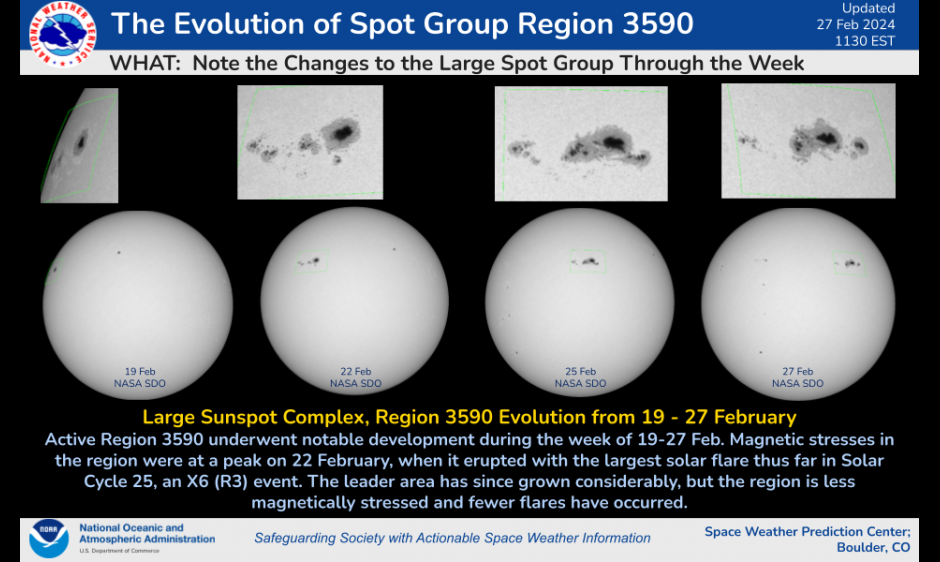
Sunspot Region 3590 Evolution from February 19-27th
Sunspot Region 3590 underwent notable growth and development since rotating into Earth-view. Images from the NASA/SDO satellite captured these changes in the sunspot group as it has rotated across the visible solar disk. This sunspot group was the source of the February 22nd X6 (R3) solar flare - the largest thus far in Solar Cycle 25. The region remains quite large and its size and length are many times the size of Earth. Continue to visit our web page for the latest information, forecasts, and updates.